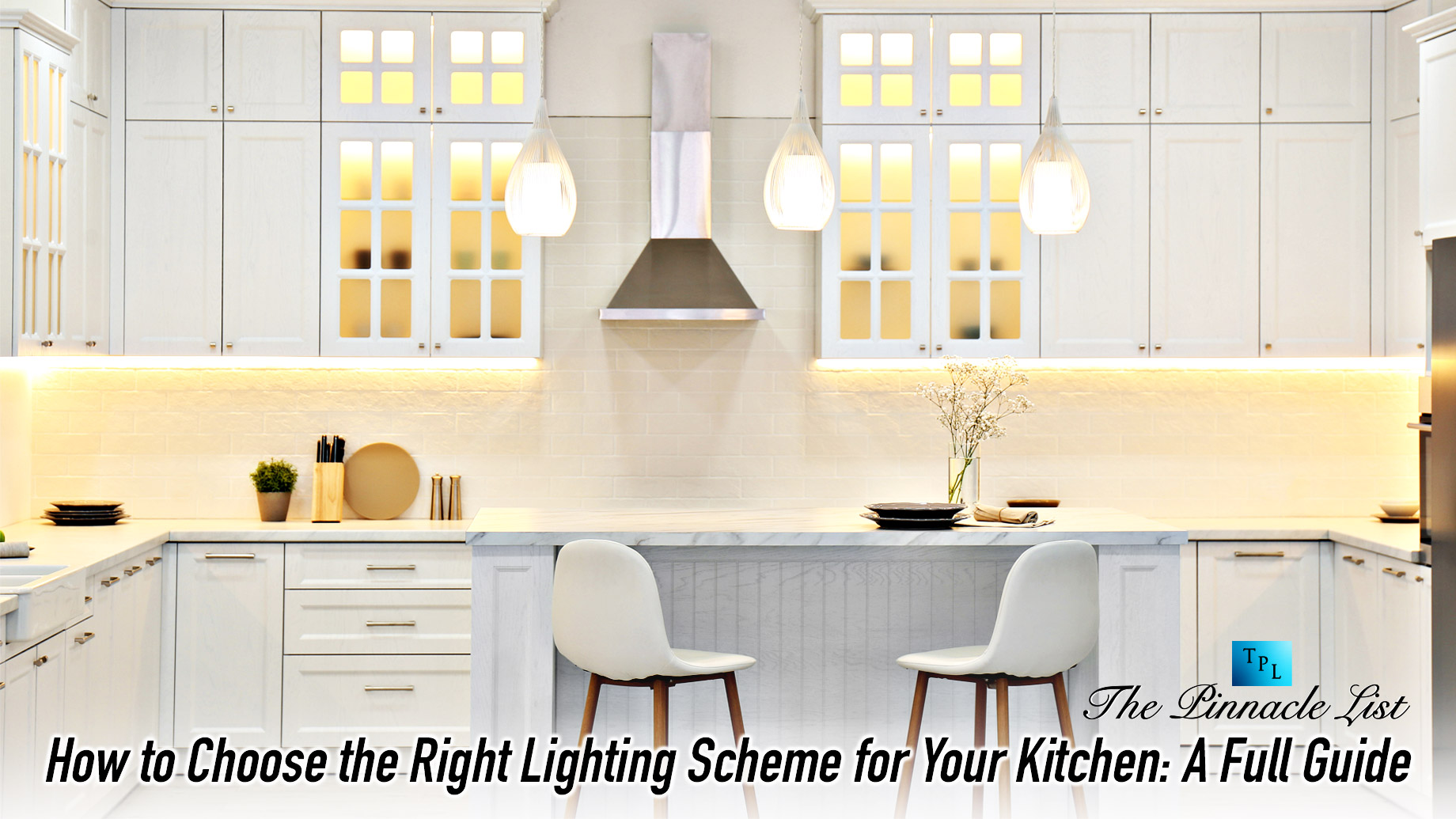
Selecting the perfect lighting scheme for your kitchen goes beyond mere illumination—it’s about creating a space that balances functionality with ambiance. Whether you’re renovating or designing from scratch, understanding how different lighting types and fixtures can enhance your kitchen’s appeal and practicality is essential. Here are key considerations and choices involved in achieving optimal lighting for your culinary haven.
Consider Color Scheme
Whether you’re revamping your space or starting fresh, understanding how different lighting types and fixtures can complement your kitchen’s palette is crucial. When it comes to the color scheme, elegant pendant lights for kitchens can add a touch of sophistication and a focal point to your space. This guide will take you through essential considerations and decisions to achieve the perfect lighting that not only illuminates but also enhances the aesthetic harmony of your culinary space.
Understand Different Types of Kitchen Lighting
Familiarize yourself with the three main types of kitchen lighting – ambient, task, and accent lighting. Ambient lighting provides overall illumination, usually from ceiling-mounted fixtures. Task lighting, as the name suggests, illuminates specific work areas like countertops and stoves. Accent lighting highlights decorative elements such as artwork or architectural features.
Ambient Lighting
This type of lighting provides overall illumination throughout the kitchen, typically achieved through ceiling-mounted fixtures like flush mounts or semi-flush mounts. Ambient lighting ensures the entire space is adequately lit, making it easier to navigate and work in. For larger kitchens, consider recessed lights spaced evenly to avoid shadows and maintain uniform brightness. It sets the foundational tone of your kitchen’s atmosphere, creating a welcoming environment for daily activities and social gatherings alike.
Task Lighting
Task lighting focuses on specific work areas where detailed activities like chopping vegetables or reading recipes occur. Under-cabinet lights are excellent for illuminating countertops, reducing shadows that can hinder visibility during food preparation. Pendant lights over islands or peninsulas provide targeted light for tasks and add a decorative element to your kitchen’s design. Properly placed task lighting enhances safety and efficiency, ensuring you can work comfortably without straining your eyes or compromising precision.
Accent Lighting
This type of lighting highlights architectural features, artwork, or decorative elements in your kitchen. Use adjustable track lighting to direct attention to a prized collection of cookware or a unique backsplash. Wall-mounted sconces can illuminate alcoves or display shelves, adding depth and visual interest to your kitchen’s overall ambiance. Accent lighting contributes to the aesthetic appeal of your space, allowing you to showcase your style while enhancing the architectural details that make your kitchen unique.
Choose Appropriate Light Fixtures
Select light fixtures that complement your kitchen’s style and serve their intended purpose. Flush mount or semi-flush mount fixtures are great for ambient lighting in smaller kitchens, while recessed lights offer a streamlined look and focused illumination. Pendant lights add a decorative touch over islands or dining areas, enhancing both function and aesthetics.
Consider the Color Temperature
Pay attention to the color temperature of your lighting. Warmer tones (2700K-3000K) create a cozy atmosphere and are ideal for residential kitchens. Cooler temperatures (3500K-4000K) are brighter and more energizing, suitable for task lighting where precision is key. Blend different temperatures strategically to balance warmth and functionality throughout your kitchen.
- Mixing Color Temperatures: Don’t be afraid to mix different color temperatures strategically in your kitchen. For instance, you might use warmer tones in dining or relaxation areas to create a welcoming ambiance, while cooler temperatures can enhance visibility and productivity in workspaces like islands or countertops where tasks such as chopping vegetables or reading recipes are common.
- Natural Light Integration: Consider how natural light interacts with your chosen color temperatures throughout the day. Natural daylight often has a cooler tone, so if your kitchen receives ample sunlight, you may want to balance this with warmer artificial lighting to maintain consistency and avoid abrupt shifts in ambiance as the day progresses.
Layer Your Lighting for Optimal Effect
Layering involves combining different types of lighting to create a balanced and versatile kitchen environment. Combine ambient, task, and accent lighting to eliminate shadows, reduce glare, and enhance visual appeal. Dimmers are invaluable for adjusting light intensity based on the time of day and specific activities, offering flexibility and energy efficiency.
Plan for Energy Efficiency
Opt for energy-efficient lighting options such as LED bulbs, which consume less electricity and last longer than traditional incandescent bulbs. Look for fixtures with the ENERGY STAR label, indicating they meet stringent efficiency standards. This choice will reduce your carbon footprint and lower your utility bills over time.
Conclusion
Choosing the right lighting scheme for your kitchen involves thoughtful consideration of layout, functionality, fixture types, color temperatures, and energy efficiency. By assessing your needs and preferences in each area, you can create a well-lit kitchen that enhances both practicality and style. Remember, lighting is not just about brightness – it’s about creating a welcoming and functional space where you can enjoy cooking and gathering with loved ones.